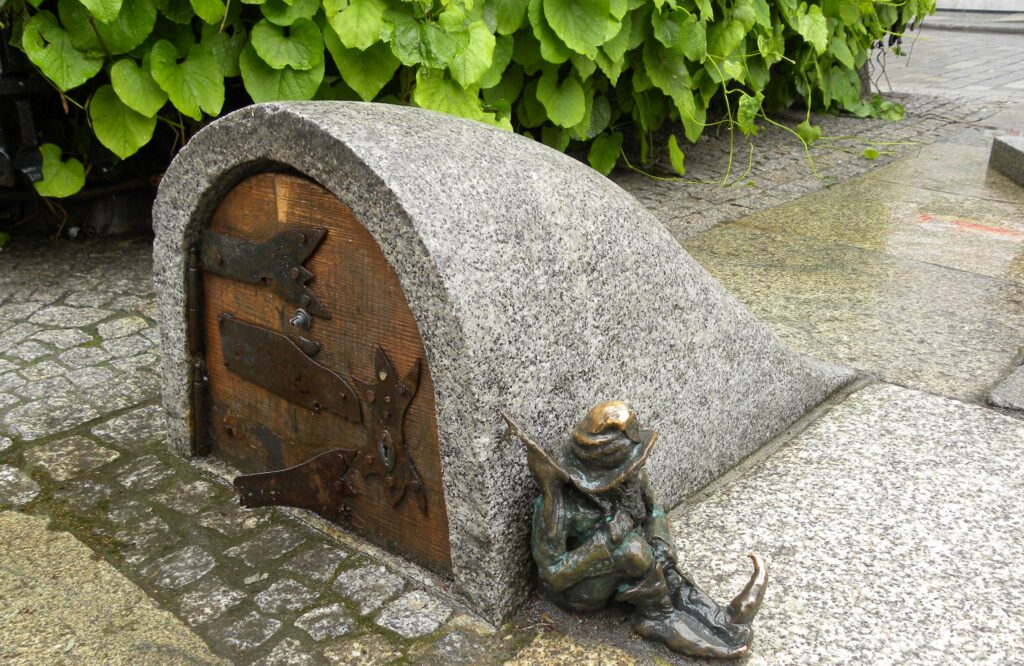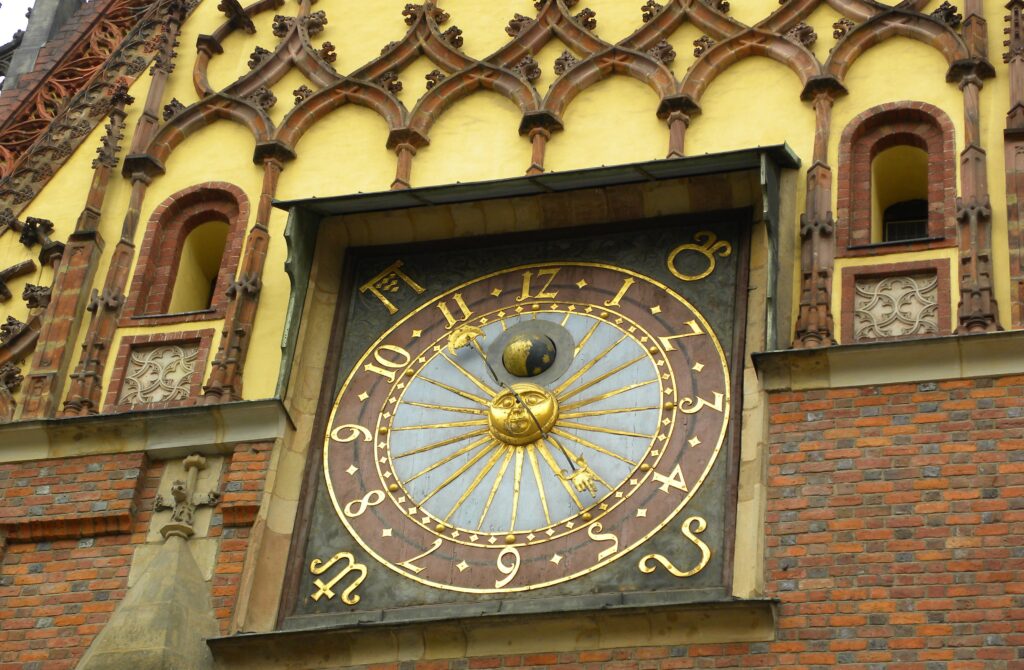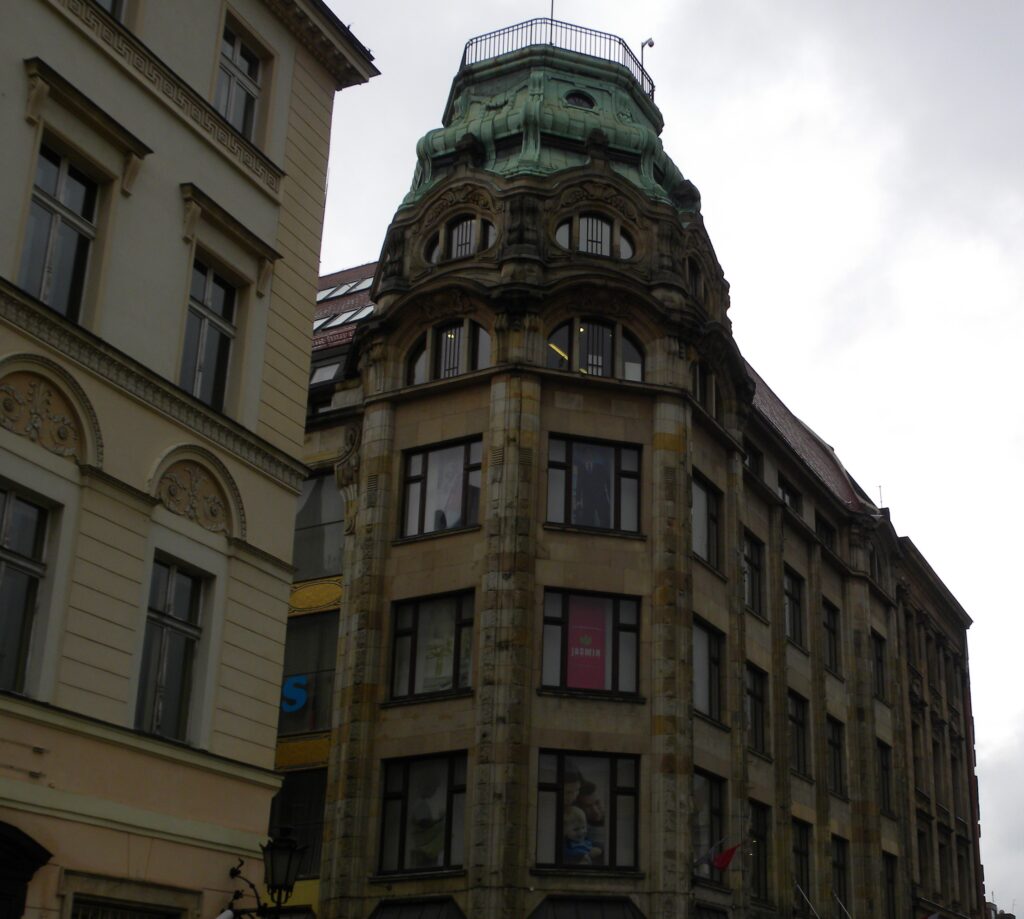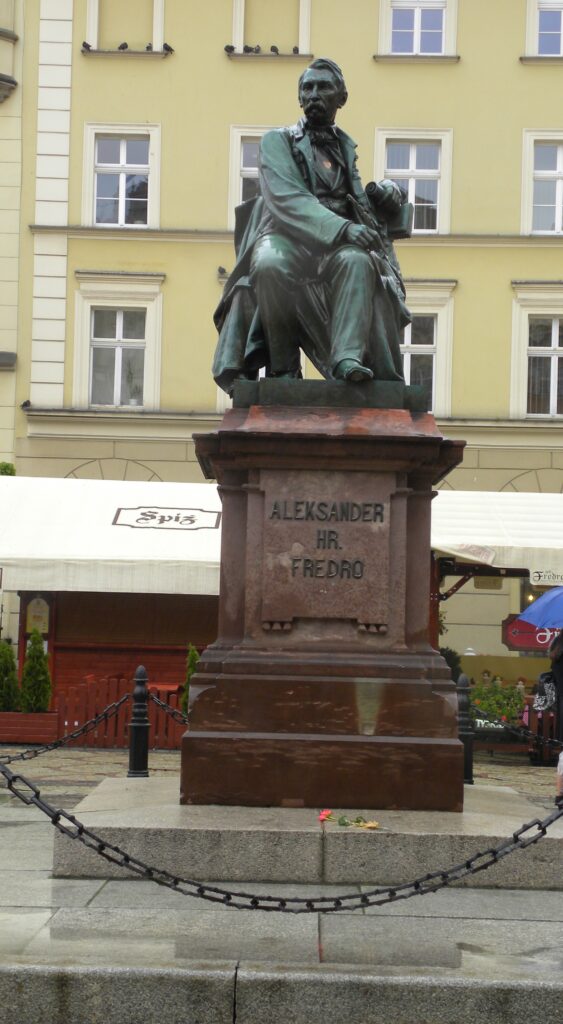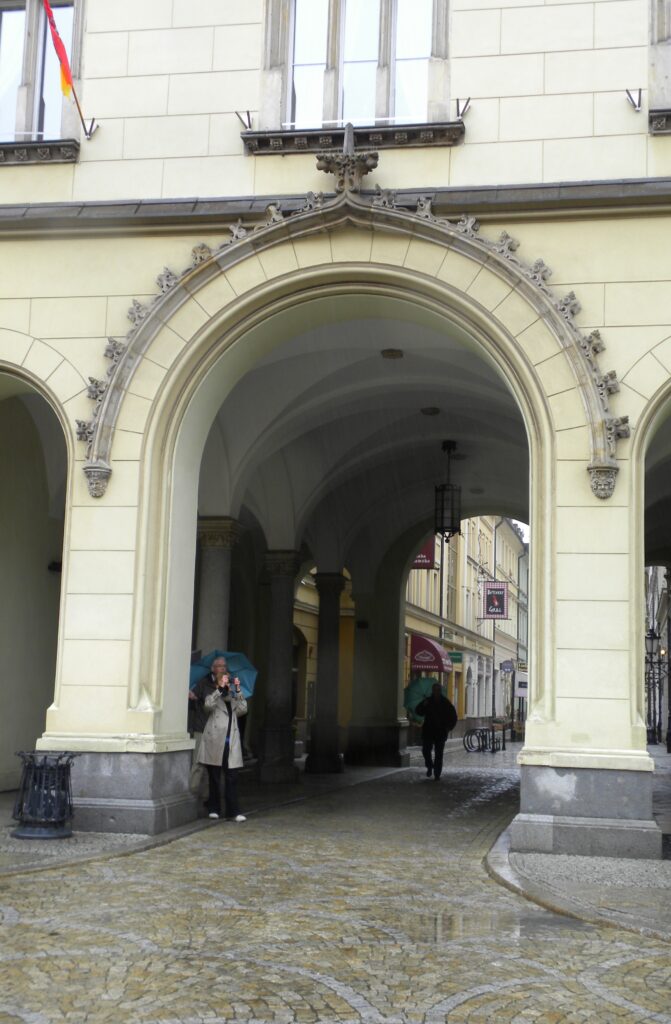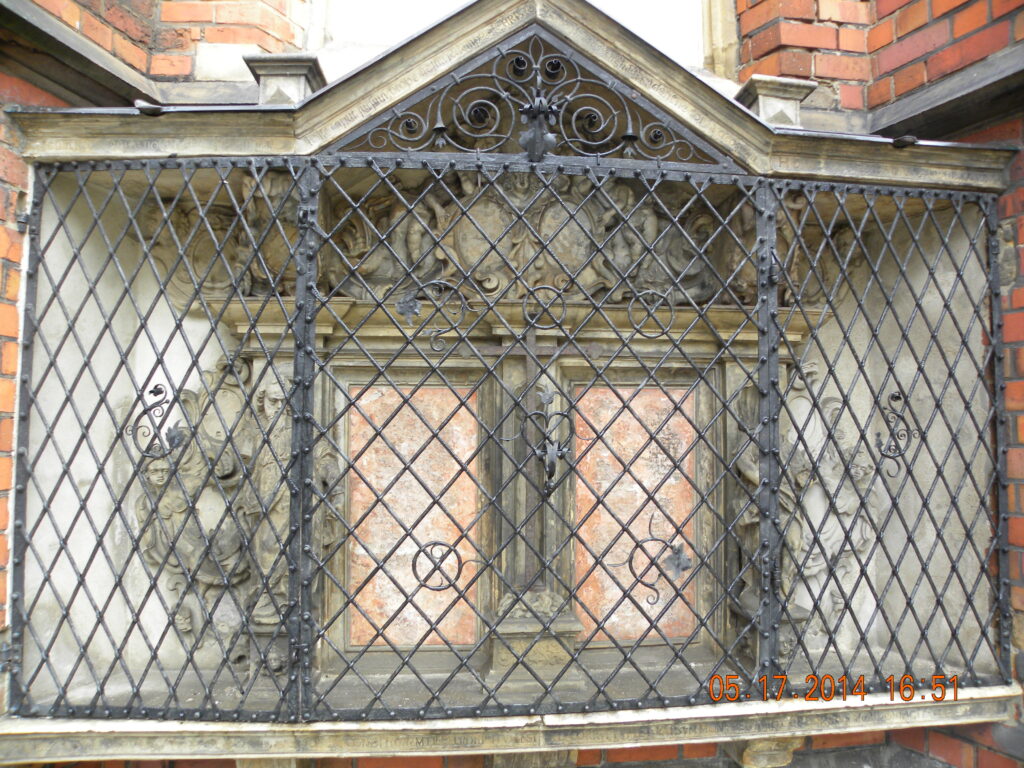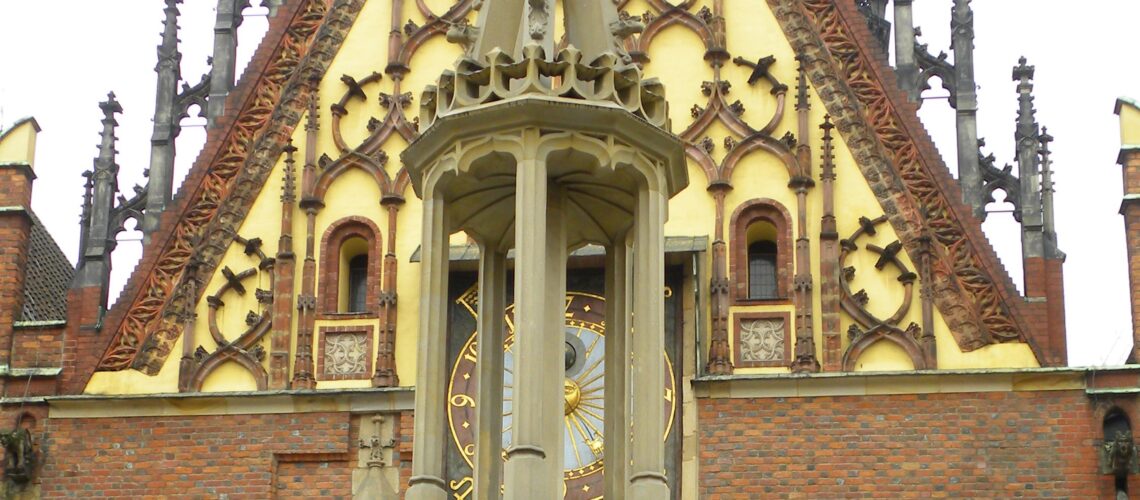
January 18, 2023
Cities around the world: Wrocław – part 1 – history and monuments
Wrocław, the capital of Lower Silesia, is one of the oldest and most beautiful cities in Poland. The geographical location, architecture and culture of the city make it unusual and attractive in many respects.
Located at the foot of the Sudetes, in the Silesian Lowland in the so-called “Pradolina Wrocławska” on the Odra River, crossed by its numerous tributaries and canals, it’s a unique city of 12 islands, 101 bridges and 33 footbridges. It’s the most in Poland and ranks among the top ten European cities. For this reason, Wrocław is often called the “Venice of the North” or “Polish Venice”. It used to be a very important transport hub, where two trade routes intersected – the Amber Route and Via Regia.
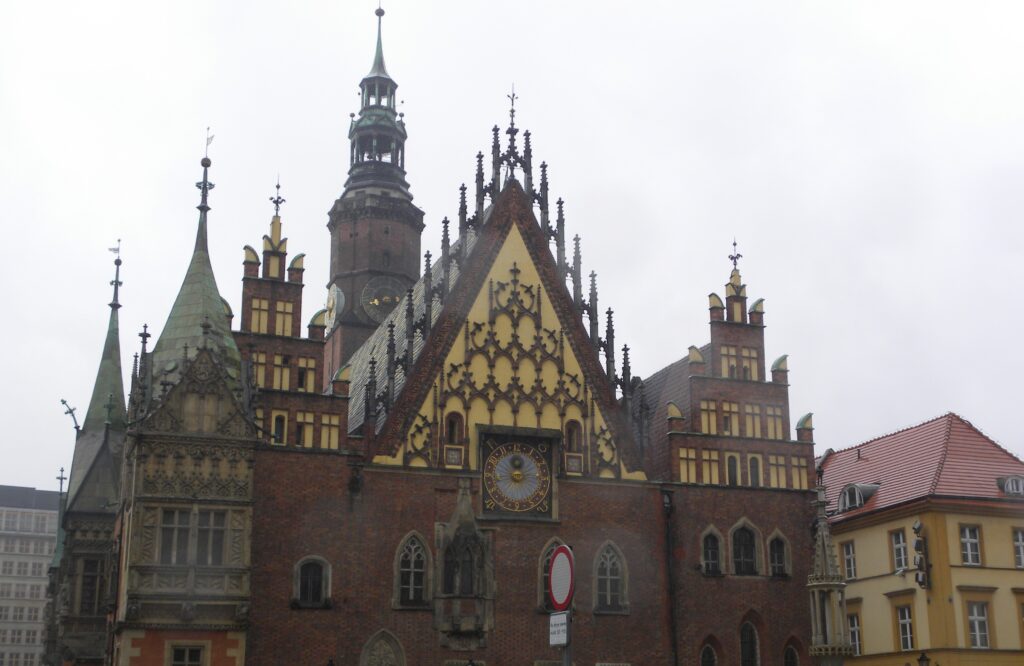
History
The first mentions of Wrocław date back to the year 1000 and are related to the establishment of a bishopric. But it is believed that the Slavs settled in one of the districts of Wrocław – Ostrów Tumski – about 150 years earlier. The oldest discovered traces of settlement date back to the 10th century. At that time, a wooden stronghold was built on the Oder River, which grew over time. In the 11th and 12th centuries, the first stone and brick buildings appeared in Ostrów. In the 13th century, the then Piast rulers of Wrocław expanded the castle. The monumental building stood in the area of today’s Św. Martin. Their remnant is the Gothic church of St. Martin – it served as the castle chapel.
100 years later, a new princely residence was built on the left bank of the Oder River. The castle then lost its importance, and at the turn of the 15th and 16th centuries it was demolished. Ostrów was already subject to church authorities at that time. It was an asylum for those who committed crime in the secular part of the city. During World War II, the historic Ostrów Tumski was almost completely destroyed.
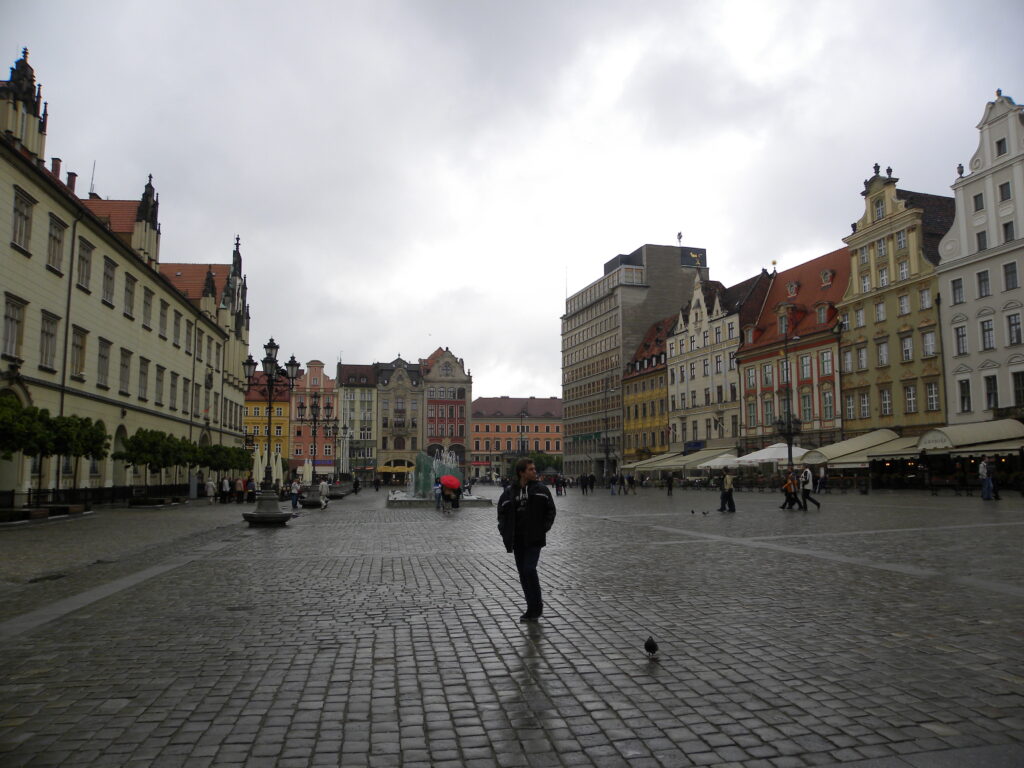
Architecture and monuments
The architecture of Wrocław creates a wonderful urban layout. In addition to generally recognized as historic buildings, Wrocław hides a whole lot of small buildings, houses, structures and tenement houses that attract the attention of tourists. In every part of Wrocław you can find something amazing that can dazzle and delight the eye of even the most demanding tourist.
The city still has a lot of buildings that have been preserved in their original state or that have been restored.
Ostrow Tumski
The times of the early Middle Ages are reminiscent of Ostrów Tumski, where one of the most beautiful complexes of sacral architecture in Europe has been preserved in excellent condition.
One of them is the Gothic cathedral of Saint John the Baptist from the 13th-14th century, rebuilt after war damage, with a phenomenal silver altar funded by Archbishop Andreas Jerian. Also in this district there is the oldest temple – the church of Saint Giles, built in the Romanesque style in the 13th century. It is a single-nave church with an extremely interesting architectural element – the chancel’s rainbow arch. On Ostrów Tumski there is also a gothic two-storey brick hall church of the Holy Cross and Saint Bartholomew, erected in 1288 by Henry IV the Right. In its vicinity there is a statue of Nepomuk – a baroque figure over 9 meters high, depicting the figure of Saint John of Nepomuk surrounded by four half-figures of angelic atlantes that support the block on which the saint is located. There is also the Archdiocesan Museum, which has been collecting monuments of sacred art for over 100 years, including the famous Book of Henryków from the 13th-14th century with the first sentence written in Polish.
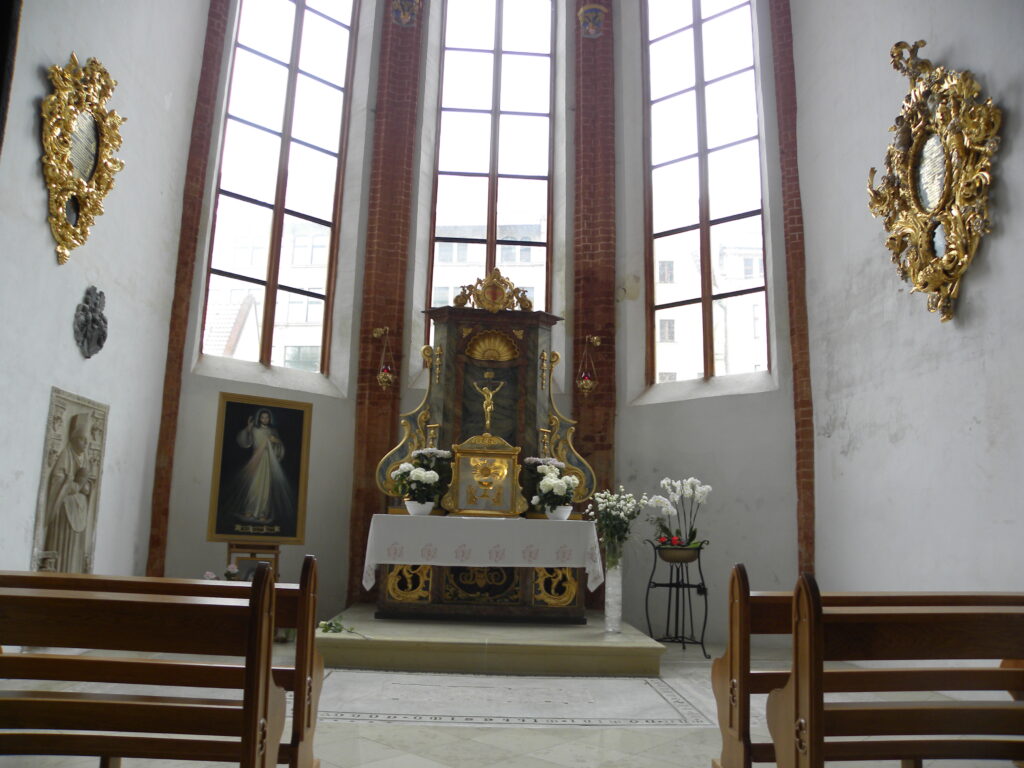
The streets and alleys of Ostrów Tumski are illuminated by over 100 gas lanterns. Every day they are lit and extinguished by a lamplighter dressed in a characteristic outfit: a top hat and a black cape, who can be found just before dusk and at dawn.
Ostrów Tumski is a perfect place for an evening walk due to the climatic lighting, historic buildings and attractive location close to the center of Wrocław.
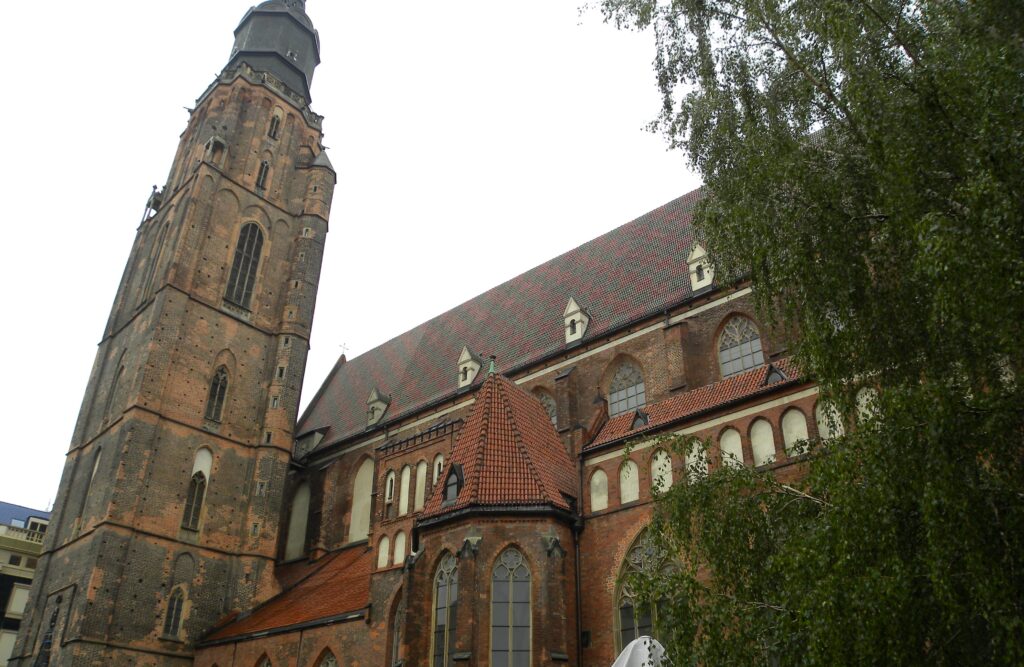
Main Square
In the center of the square there are the Cloth Hall and the town hall building with a 66-meter tower, a monument of Gothic and Renaissance architecture unique in Europe. The market square is surrounded on four sides by beautiful bourgeois tenement houses.
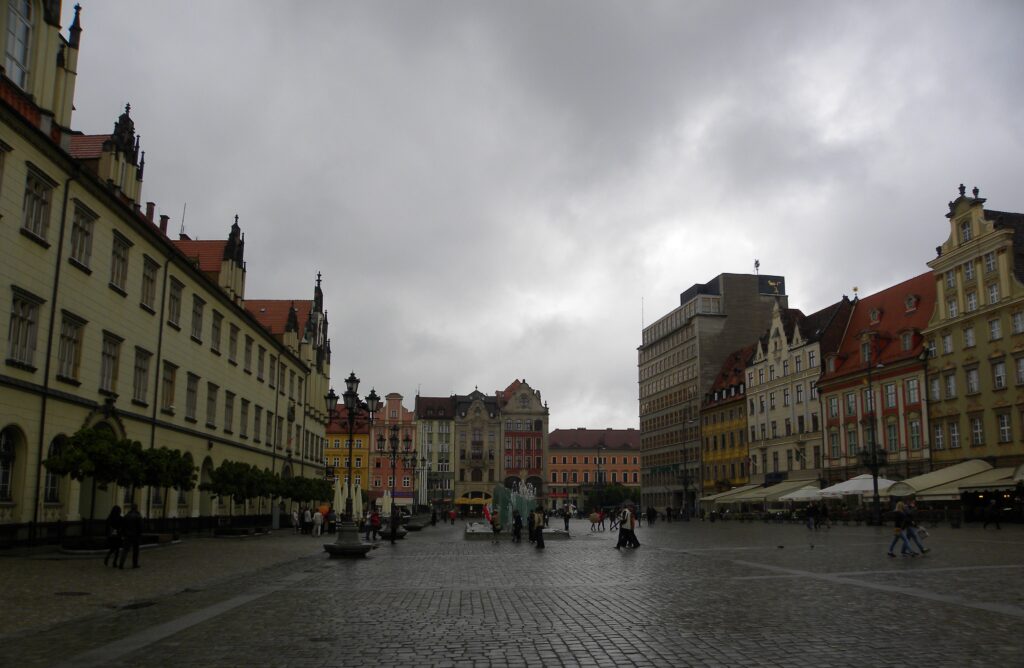
Townhouses
These extremely charming buildings built on cobblestones come from different periods. On the eastern side, the most interesting are the House Under the Golden Crown from 1528 and the House Under the Golden Dog from the first half of the 18th century. On the west side, the House of Griffins from the 16th century, the tenement house Under the Golden Eagle from the 18th century and the tenement house Under the Blue Sun erected in the 16th century deserve the most attention.
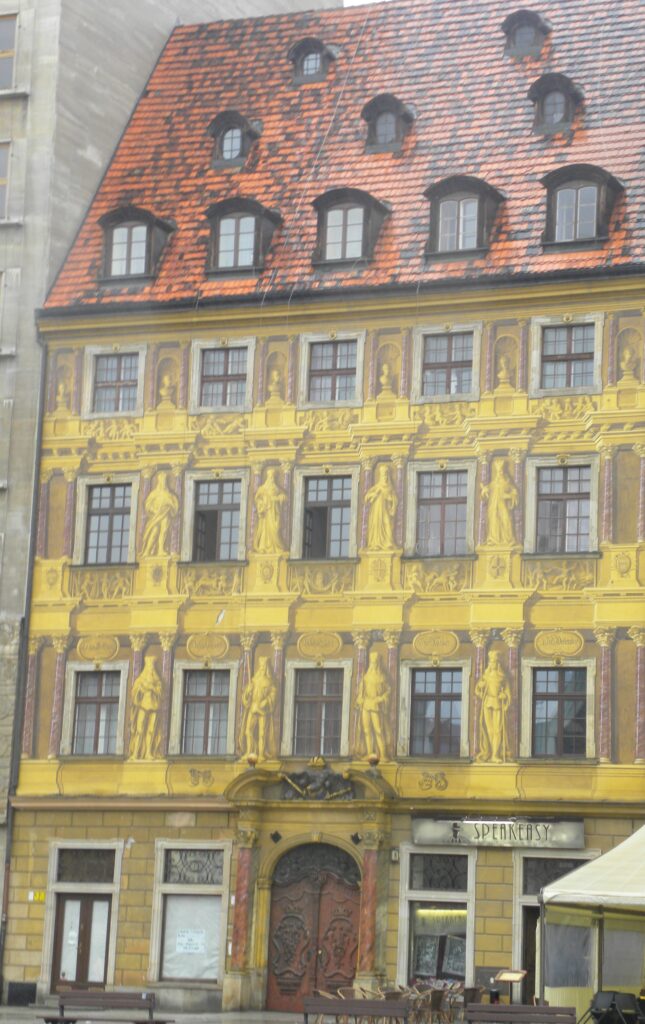
Town hall
Counted among the most magnificent Gothic buildings in Central Europe, the town hall has been preserved to this day in the best condition. In front of the eastern façade there is a faithful copy of the medieval pillory, in front of the western one – a monument to the poet Aleksander Fredro. Currently, the town hall houses the Museum of Bourgeois Art and many important ceremonies take place there. In the underground part of the town hall there is the famous Piwnica Świdnicka, which is the oldest gastronomic establishment not only in the city, but also throughout Europe.
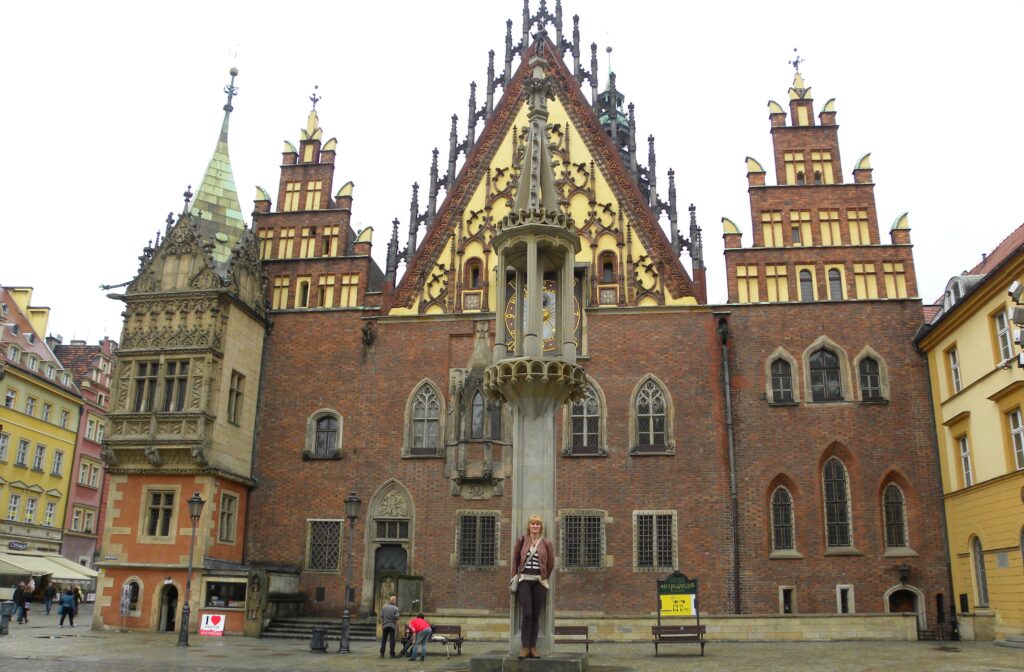
Aula Leopoldyńska
Located in the eighteenth-century building of the University, the Aula Leopoldyńska is one of the largest Baroque interiors in Poland that has survived to our times.
Penitents Footbridge
Footbridge at a height of 45 m connecting the towers of the church of St. Mary Magdalene. From the bridge you can see a fragment of the market square, the tower of the town hall and the church of St. Elżbieta, Ostrów Tumski, chimneys of the heating plant and the Rędziński bridge. This is one of the most interesting vantage points in Wrocław.
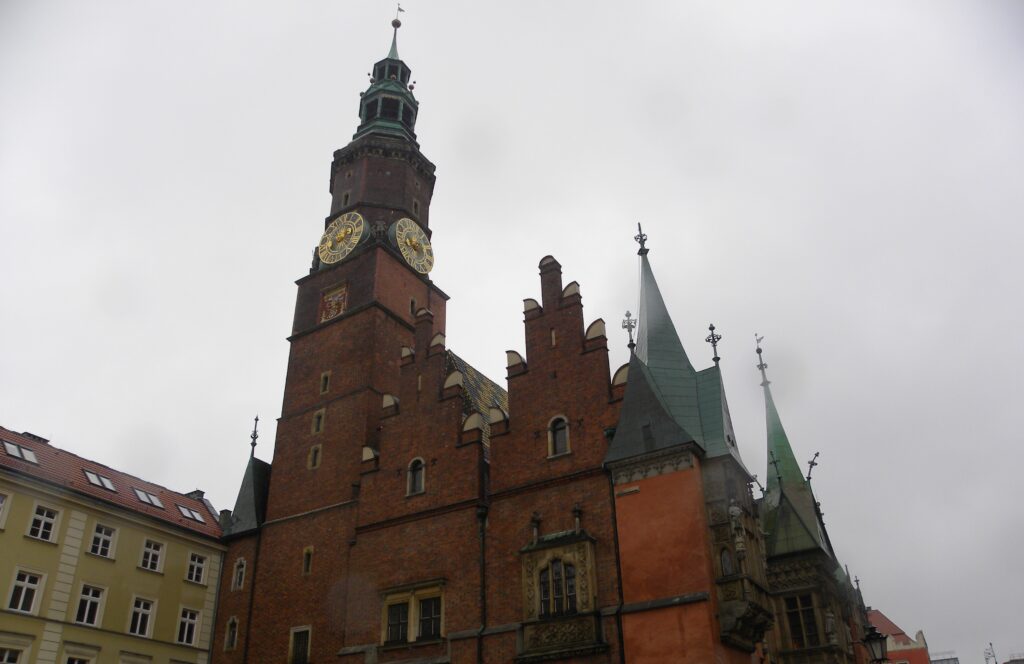
Panorama of Racławice
The painting by a team of painters under the direction of Jan Styka and Wojciech Kossak is a unique depiction of the Battle of Racławice on April 4, 1794. It was created in Lviv on the occasion of the 100th anniversary of the Kościuszko Uprising. The 15 x 114 m work is housed in a specially built rotunda. Thanks to the use of painting (special perspective) and technical treatments (lighting, artificial terrain, darkened, winding approach), the illusion of multidimensionality of the image was obtained.
Centennial Hall
One of the most important works in world architecture of the 20th century, designed by the outstanding architect Max Berg. It was established in 1913 on the occasion of the international exhibition on the 100th anniversary of the Battle of Leipzig. In 2006, it was inscribed on the UNESCO World Heritage List.
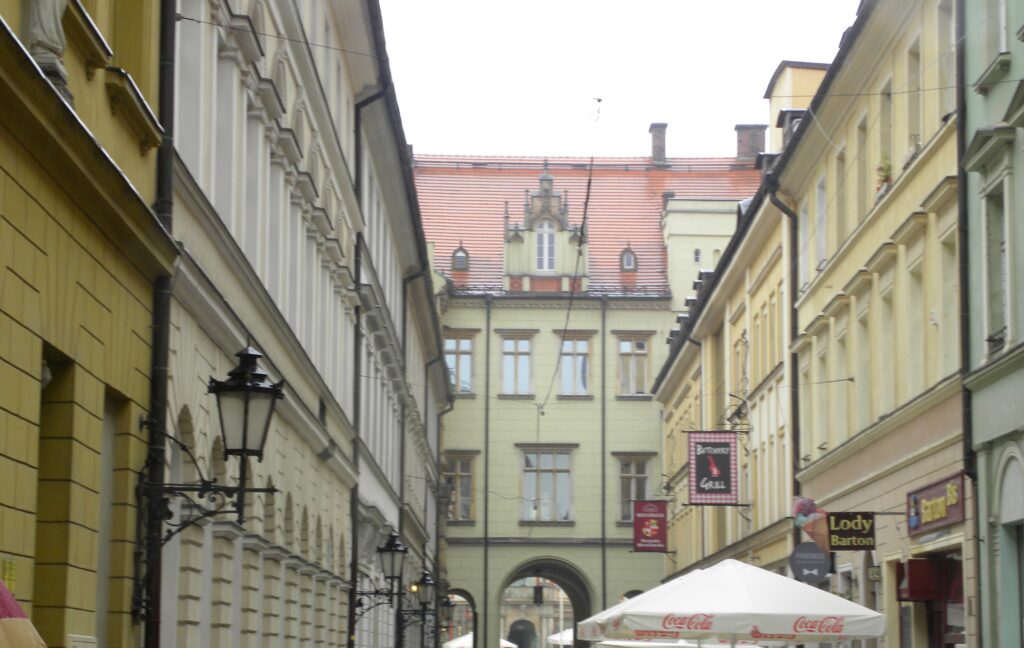
Four Domes Pavilion
The Centennial Hall complex also includes the Four Domes Pavilion. Designed by Hans Poelzig, it was built in 1912-1913. Formerly it housed Wrocław’s Feature Film Studio, now one of the most interesting and richest collections of Polish contemporary art in the country, belonging to the National Museum, is presented in the modernized building. Next to the Centennial Hall surrounded by a pergola, one of the largest multimedia fountains in Europe gushes out.
Dwarfs
And everything is looked after by Wrocław dwarfs. You will learn the stories of dwarves in the next posts – stay tuned.
